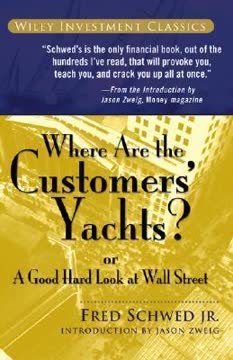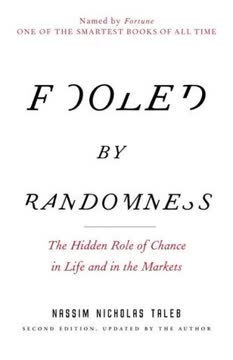重点摘要
1. 非理性繁荣推动金融市场的投机泡沫
当价格上涨的消息激发投资者的热情,这种热情通过心理传染在人与人之间传播,在此过程中放大了可能证明价格上涨合理的故事,并吸引越来越多的投资者,尽管他们对投资的实际价值存有疑虑,但部分因为对他人成功的羡慕,部分因为赌徒的兴奋而被吸引。
反馈回路机制。 投机泡沫由投资者热情和价格上涨的自我强化循环驱动。这个过程通常始于一个诱发因素,如技术创新或经济政策变化,激发初始价格上涨。随着价格上涨,更多投资者被吸引进来,受到以下因素的推动:
- 错失恐惧症(FOMO)
- 对他人成功的羡慕
- 对自己把握市场时机的过度自信
- 相信“新时代”叙事,认为高估值是合理的
历史实例。 这种模式在历史上多次重复出现在各种市场中:
- 1720年代:南海泡沫(英国)和密西西比泡沫(法国)
- 1920年代:美国股市繁荣导致1929年崩盘
- 1990年代:互联网泡沫
- 2000年代:美国房地产泡沫
心理因素。 非理性繁荣由认知偏见和情感反应维持:
- 确认偏见:寻找支持现有信念的信息
- 羊群行为:跟随大众
- 近期偏见:过度重视近期事件和趋势
- 过度自信:低估风险,高估能力
2. 心理锚定和社会动态影响市场行为
人们准备相信多数人的观点或权威,即使这些观点明显与事实判断相矛盾。
认知锚定。 投资者在决策时常依赖心理捷径和参考点,即使这些锚定是任意或不合理的。关键的心理锚定包括:
- 最近的价格水平
- 整数(如道琼斯10000点)
- 历史平均值
- 专家预测和价格目标
这些锚定可能导致持续的错误定价和市场效率低下。
社会影响。 市场行为受到社会动态和信息级联的强烈影响。投资者受到以下因素的影响:
- 口口相传的交流
- 社会证明(跟随他人的行为)
- 权威人物和被认为的专家
- 文化叙事和流行情绪
这些心理和社会因素的综合效应可以创造强大的市场动能,使价格在长时间内远离基本价值。
3. 媒体放大市场趋势并塑造公众认知
新闻媒体在不断竞争以吸引他们生存所需的公众注意力。
吸引注意力的叙事。 媒体在塑造市场情绪方面起着关键作用:
- 放大和传播与市场相关的故事
- 创建和强化关于市场趋势的叙事
- 提供专家评论和预测的平台
- 关注戏剧性的价格波动和破纪录事件
这种不断的信息和分析流可以激发投资者情绪并助长市场波动。
选择性报道。 媒体报道倾向于强调:
- 短期价格波动而非长期基本面
- 耸人听闻的故事和极端预测
- 对复杂市场现象的简化解释
- 个人投资者或公司的成功故事
这种选择性关注可能扭曲投资者的认知并鼓励投机行为。
信息级联。 媒体可以触发和加速信息级联,许多投资者基于他人的行为而非自己的私人信息做出相同的决策。这可能导致:
- 投资理念和策略的快速传播
- 对新闻事件的过度反应
- 市场运动中的自我实现预言
4. 历史模式揭示市场繁荣与萧条的周期性
结论似乎是,尽管对房价的实际路径存在一些不确定性,但大多数证据表明,大多数房屋的实际升值率令人失望地低。
周期性循环。 金融市场在不同资产类别和时间段内表现出繁荣与萧条的周期性模式。关键观察包括:
- 估值的长期均值回归(如市盈率)
- 投资者乐观和悲观的交替时期
- 不同泡沫中“新时代”叙事的相似性
- 极端估值后往往伴随长期回报不佳
历史视角。 分析长期市场数据揭示:
- 美国股市在1901年、1929年、1966年、2000年和2007年的峰值
- 全球房地产繁荣与萧条(如1980年代的日本,2000年代的美国)
- 商品和新兴市场周期
从历史中学习。 理解这些历史模式可以帮助投资者和政策制定者:
- 为当前市场状况提供背景
- 识别潜在的泡沫形成
- 在极端估值时期调整预期
- 制定风险管理策略
5. 有效市场理论未能完全解释市场波动
这张图的早期版本成为那篇论文的核心,判断其引起的关注。有时简单的图表比正式分析更令人不安。
效率的局限性。 尽管有效市场假说提供了有价值的见解,但它未能完全解释观察到的市场行为:
- 过度波动:股价波动超过基本价值变化所能解释的范围
- 回报可预测性:基于估值指标的长期回报具有一定的可预测性
- 动量和反转:资产价格的短期趋势和长期反转
- 行为异常:由投资者心理驱动的持续市场效率低下
反对效率的证据。 挑战有效市场理论的关键实证发现包括:
- 方差界限测试显示股价波动超过股息波动
- 极端赢家和输家的长期回报反转
- 估值比率(如CAPE)对长期回报的预测能力
- 持续存在的异常现象,如价值效应和动量效应
调和理论与证据。 对市场效率的更细致入微的看法承认:
- 套利限制阻止了错误定价的即时纠正
- 不同市场和时间段的效率程度不同
- 投资者行为和心理在市场运动中的作用
6. 新时代思维助长不切实际的期望和市场高估
新时代一词周期性地被用来描述这些时期。
重复的叙事。 历史上,市场繁荣时期伴随着对“新时代”永久繁荣的信念。常见主题包括:
- 技术革命(如铁路、互联网)
- 金融创新
- 经济政策或结构的变化
- 人口变化
这些叙事通常证明极端估值是合理的,并鼓励投机行为。
历史实例。 新时代思维在许多市场事件中显而易见:
- 1920年代:“新时代”永久繁荣
- 1960年代:“新经济”由企业集团和技术驱动
- 1990年代:“新范式”互联网和信息时代
- 2000年代:“大缓和”和房地产繁荣
心理吸引力。 新时代叙事之所以强大,是因为它们:
- 为复杂的经济现象提供简单的解释
- 迎合人类对进步和改进的渴望
- 证明高估值是合理的并鼓励乐观
- 随着更多人接受叙事而创造社会证明
投资者应对“这次不同”的论点保持谨慎,并保持长期的历史视角。
7. 行为金融学提供市场非理性见解
这些随意观察的反思应该让我们相信,几十年来房屋并没有显著升值。
认知偏见。 行为金融学识别出许多影响投资者决策的心理偏见:
- 过度自信:高估自己的能力和知识
- 损失厌恶:对损失的感受比同等收益更强烈
- 可得性偏差:过度重视容易回忆的信息
- 框架效应:受信息呈现方式的影响
理解这些偏见可以帮助解释市场异常和投资者行为。
套利限制。 行为金融学认识到,即使存在非理性投资者,市场也可能不会迅速纠正错误定价,因为:
- 套利的实施成本和风险
- 噪音交易者风险:非理性投资者将价格推得更远离基本价值
- 代理问题:专业经理面临逆势头寸的职业风险
应用。 行为金融学的见解可以应用于:
- 开发更现实的资产定价模型
- 设计更好的投资策略
- 改善金融教育和决策
- 为保护投资者制定监管政策
8. 政策干预可以减轻投机泡沫的影响
公共人物默许市场估值的起伏,保持沉默,不评论估值的影响,并将所有评论留给专门从事几乎不可能的短期市场预测的市场分析师,这是一种严重的错误,这些分析师可能与投资银行、经纪商、房屋建筑商或房地产经纪人有共同利益。
货币政策。 中央银行可以通过以下方式在应对资产泡沫中发挥作用:
- 利率调整
- 宏观审慎政策(如资本要求、贷款价值比限制)
- 清晰沟通市场风险和估值
然而,这些干预措施的有效性和潜在副作用存在争议。
监管措施。 政策制定者可以实施法规以减少投机过度:
- 杠杆限制和保证金要求
- 市场压力期间的卖空限制
- 增强披露要求
- 熔断机制和交易暂停
公众教育。 政府和金融机构可以通过以下方式促进金融素养和市场风险意识:
- 教育计划和资源
- 清晰沟通市场估值和历史背景
- 鼓励多元化和长期投资
在干预需求与保持市场效率和创新之间取得平衡是政策制定者面临的关键挑战。
9. 多元化和风险管理对个人投资者至关重要
为鼓励适当的风险管理,公共当局应强调更有效的风险对冲建议。
超越传统多元化。 有效的风险管理不仅仅是持有股票和债券的组合:
- 跨国家和地区的地理多元化
- 资产类别多元化(如房地产、商品、另类投资)
- 因子多元化(如价值、动量、质量)
- 通过定投实现时间多元化
对冲策略。 投资者可以使用各种工具来管理特定风险:
- 期权和期货合约
- 反向ETF和卖空
- 国际投资的货币对冲
- 通胀保护证券
量身定制的风险管理。 个人应考虑其独特的情况:
- 人力资本和职业风险
- 房地产敞口(如房屋所有权)
- 生命阶段和投资期限
- 风险承受能力和财务目标
制定全面的风险管理策略可以帮助投资者应对市场波动,实现长期财务成功。
10. 理解泡沫对驾驭金融市场至关重要
在我看来,投机泡沫并不是关于投资者的疯狂,而是关于投资者如何被一系列表面上合理的传统估值理论所左右。
泡沫识别。 虽然精确预测泡沫具有挑战性,但投资者可以寻找警示信号:
- 与基本面脱节的快速价格上涨
- 广泛相信“新时代”叙事
- 增加的投机和杠杆
- 媒体关注和公众热情高涨
驾驭泡沫市场。 投资者在潜在泡沫期间的策略包括:
- 保持长期视角,避免错失恐惧症
- 逐步减少对高估资产的敞口
- 实施止损单或其他风险管理工具
- 寻找被低估的资产或逆势机会
从过去的泡沫中学习。 研究历史事件可以提供宝贵的教训:
- 估值和均值回归的重要性
- 杠杆和金融创新在放大泡沫中的作用
- 市场和经济之间的传染潜力
- 心理因素的作用
最后更新日期:
FAQ
What's Irrational Exuberance about?
- Exploration of Market Bubbles: Irrational Exuberance by Robert J. Shiller examines the psychological and cultural factors that contribute to speculative bubbles in financial markets, focusing on stocks, bonds, and real estate.
- Historical Context: The book places current market behaviors in historical perspective, analyzing past bubbles and crashes to understand recurring patterns of investor behavior.
- Psychological and Cultural Factors: Shiller emphasizes the role of human psychology, media influence, and societal attitudes in driving market trends, suggesting these factors often lead to irrational investment decisions.
Why should I read Irrational Exuberance?
- Understanding Market Dynamics: The book provides insights into the psychological mechanisms driving market fluctuations, helping investors make informed decisions.
- Historical Lessons: It offers valuable lessons from past market bubbles, aiding readers in recognizing similar patterns in current markets to avoid potential pitfalls.
- Expert Analysis: Written by Nobel laureate Robert J. Shiller, the book combines rigorous economic analysis with accessible writing, making complex concepts understandable for a broad audience.
What are the key takeaways of Irrational Exuberance?
- Bubbles Are Psychological: Speculative bubbles are largely driven by psychological factors, such as herd behavior and overconfidence, rather than fundamental economic indicators.
- Role of Media: Media coverage can amplify market trends, creating a feedback loop that encourages further speculation and investment.
- Need for Caution: The book serves as a cautionary tale, urging skepticism of overly optimistic market narratives and consideration of potential market corrections.
What are the best quotes from Irrational Exuberance and what do they mean?
- "Irrational exuberance is the psychological basis of a speculative bubble.": This quote encapsulates the central thesis, emphasizing that investor psychology plays a crucial role in creating and sustaining market bubbles.
- "The story in every country is different, reflecting its own news.": Highlights the idea that local narratives and cultural contexts significantly influence market behavior.
- "Speculative bubbles are not so easily ended.": Suggests that once a bubble is formed, it can persist for a long time, complicating efforts to predict when it might burst.
How does Robert J. Shiller define a speculative bubble in Irrational Exuberance?
- Psychological Epidemic: A speculative bubble is a situation where news of price increases spurs investor enthusiasm, spreading through psychological contagion.
- Amplification of Stories: As more investors become involved, they amplify stories that justify the price increases, drawing in even more participants.
- Difficult to Predict: Bubbles are inherently unpredictable, driven by collective investor behavior rather than rational assessments of value.
How does Irrational Exuberance explain the role of media in financial markets?
- Amplification of Trends: Media plays a critical role in amplifying market trends by focusing on sensational stories and creating narratives that resonate with the public.
- Creating Attention Cascades: Media can initiate attention cascades, where a single news event leads to widespread public interest and further speculation in the market.
- Influencing Investor Behavior: By shaping public perceptions and expectations, media coverage can significantly influence investor behavior, often leading to irrational decision-making.
What are the structural factors contributing to market bubbles according to Irrational Exuberance?
- Technological Advances: Innovations, such as the Internet, can create excitement and optimism that drive up asset prices.
- Cultural Shifts: Changes in societal values, like increased materialism and the glorification of wealth, contribute to speculative behavior.
- Economic Conditions: Favorable conditions, such as low interest rates and strong corporate earnings, create an environment ripe for bubbles to form.
What psychological factors does Shiller identify in Irrational Exuberance?
- Herd Behavior: Investors tend to follow the crowd, leading to collective overconfidence and speculative buying.
- Emotional Decision-Making: Emotions, such as fear of missing out and envy, drive investors to make irrational choices that inflate asset prices.
- Cognitive Biases: Various cognitive biases affect investor judgment, including overconfidence and the tendency to ignore risks during market booms.
How does Irrational Exuberance relate to the concept of efficient markets?
- Critique of Efficient Market Hypothesis: Shiller challenges the hypothesis, arguing that markets are not always rational and can be influenced by psychological and cultural factors.
- Bubbles as Evidence: The existence of speculative bubbles serves as evidence that markets can deviate significantly from rational pricing based on fundamentals.
- Need for Regulation: Understanding the irrational aspects of markets may necessitate regulatory measures to protect investors and stabilize the financial system.
What are the implications of Irrational Exuberance for individual investors?
- Caution in Investing: Shiller advises caution and skepticism of market trends, especially during rapid price increases.
- Awareness of Psychological Traps: Investors should be aware of psychological traps, such as herd behavior and overconfidence, that lead to poor decision-making.
- Long-Term Perspective: The book encourages a long-term investment perspective, emphasizing the importance of understanding market fundamentals over short-term trends.
How does Shiller suggest investors can protect themselves from market bubbles?
- Diversification: Shiller recommends diversifying investments across different asset classes to mitigate risk and reduce exposure to any single market bubble.
- Education and Awareness: Emphasizes the importance of educating oneself about market dynamics and being aware of psychological factors influencing investment decisions.
- Skepticism of Optimism: Investors should maintain a healthy skepticism of overly optimistic market narratives and be prepared for potential corrections in asset prices.
How does Irrational Exuberance challenge traditional economic theories?
- Critique of Efficient Markets: Shiller challenges the efficient markets hypothesis, arguing that markets are often influenced by psychological factors rather than being purely rational.
- Behavioral Finance Perspective: Introduces concepts from behavioral finance, emphasizing the importance of understanding human behavior in economic decision-making.
- Historical Evidence: Uses historical examples to illustrate how market behavior can deviate from rational expectations, highlighting the need for a broader understanding of market dynamics.
评论
《非理性繁荣》探讨了市场泡沫和行为经济学,挑战了有效市场理论。希勒认为,心理因素在价格波动中起着重要作用,往往与基本面脱节。虽然一些读者认为这本书具有洞察力和预见性,但也有人批评它枯燥且重复。许多人欣赏希勒的历史分析和谨慎态度,尽管有些人觉得它缺乏可操作的投资建议。该书对高估市场和非理性投资者行为的警告仍然具有现实意义,尤其是在最近的市场事件之后。
Similar Books















